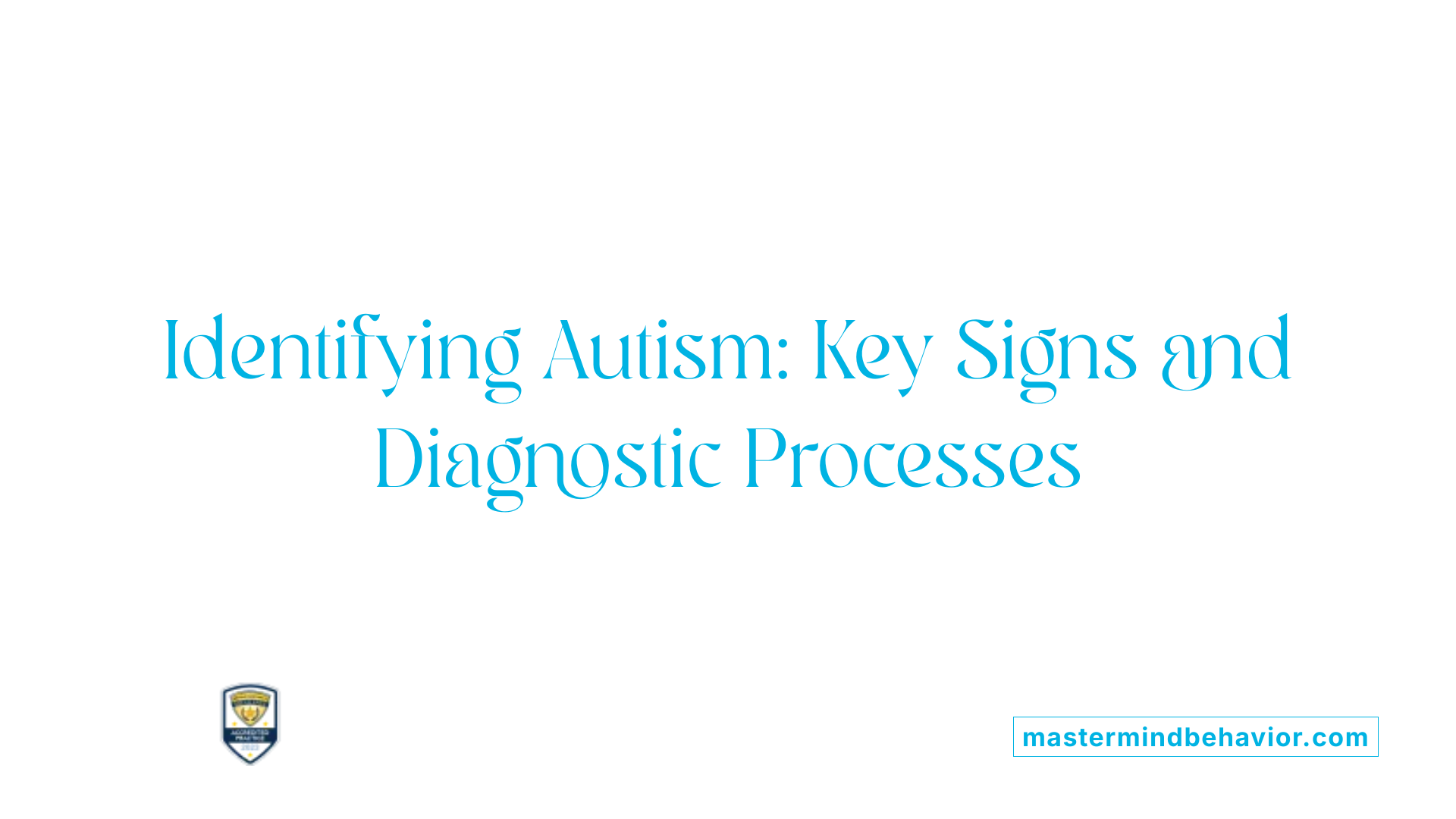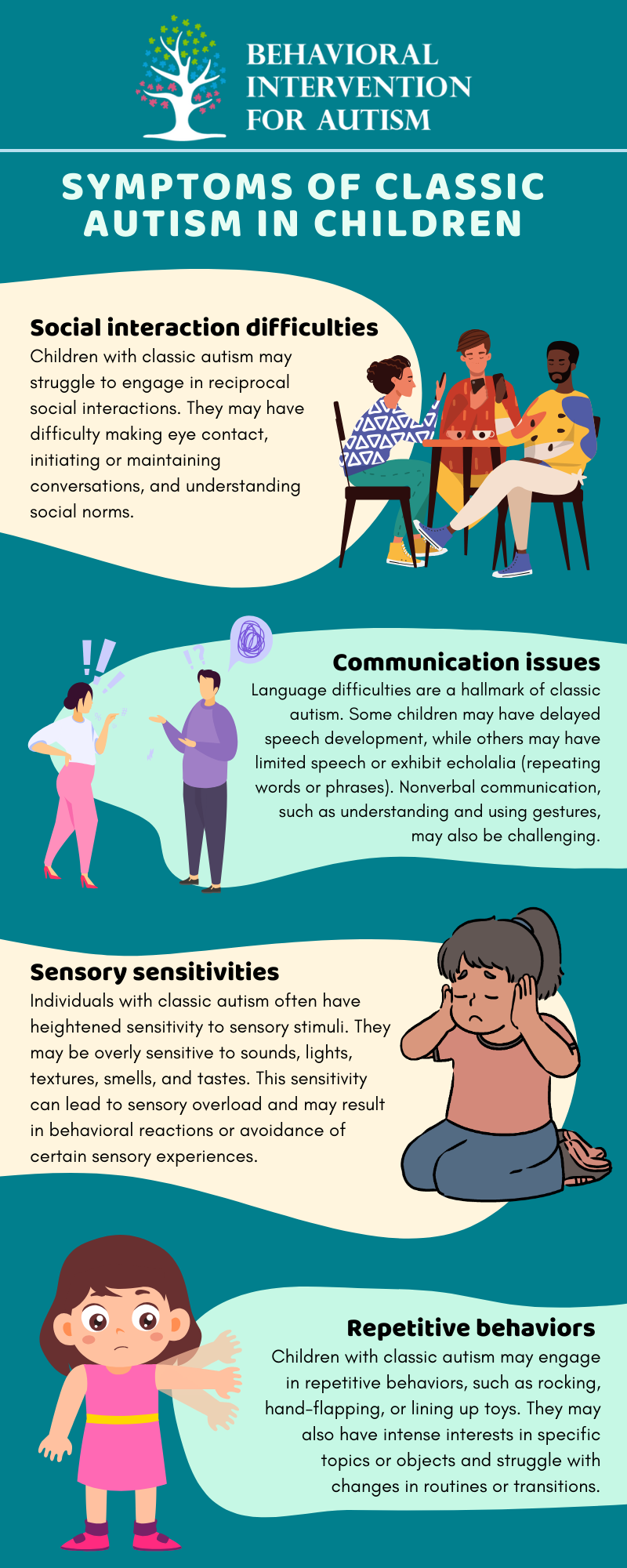Navigating sensory overload with support from Autism Spectrum Therapies
Navigating sensory overload with support from Autism Spectrum Therapies
Blog Article
Recognizing the Impact of Behavioral Autism on Day-to-day Live and Social Interactions
You could not realize how deeply behavioral autism impacts every day life and social communications. People on the spectrum commonly browse a globe full of interaction difficulties and sensory overload. These obstacles can bring about irritation and seclusion, impacting their relationships and total wellness. Recognizing these nuances is necessary for promoting encouraging settings. What techniques can we carry out to produce more inclusive rooms and purposeful links? The solutions could stun you.
Defining Behavior Autism and Its Characteristics
Behavior autism, commonly referred to as autism range disorder (ASD), incorporates a variety of conditions identified by obstacles in social interaction, interaction, and repetitive actions. You may observe that individuals with ASD frequently battle to translate social signs, which can cause misunderstandings in discussions. They may discover it tough to establish eye call or take part in small talk, making social scenarios really feel overwhelming.
Communication problems can manifest in various ways, from delayed speech growth to a choice for making use of fewer words. By recognizing these characteristics, you can cultivate an environment that promotes approval and encourages effective communication, assisting people with autism grow in their everyday communications.
The Range of Autism: Recognizing Irregularity in Actions
Autism range condition (ASD) isn't a one-size-fits-all diagnosis; it differs commonly among people. You might come across individuals who are very spoken and involve easily in discussions, while others may prefer singular tasks or communicate non-verbally.
Furthermore, the means individuals with ASD reply to sensory input can vary substantially; some may be overwhelmed by brilliant lights or loud sounds, whereas others prosper in promoting atmospheres. The range also includes differences in social interactions; some people might struggle to analyze social signs, while others navigate social settings with loved one simplicity. Understanding this irregularity is crucial, as it helps you appreciate everyone's unique experience and dressmaker support to their specific needs, fostering an extra inclusive atmosphere for every person.
Communication Obstacles Faced by Individuals With Autism
When you engage with individuals on the autism range, you may see their special communication obstacles. They often encounter troubles with both nonverbal and verbal signs, which can impact their social interactions. Understanding these barriers is important for fostering better links and support.

Verbal Interaction Difficulties
Numerous individuals on the autism range experience verbal interaction difficulties that can significantly impact their everyday interactions. You might find it testing to express your ideas, feelings, or needs clearly. This can result in irritation for both you and those around you, as misconceptions occur. You might have problem with starting discussions, keeping a topic, or understanding subtleties in speech. Typically, you might favor utilizing easy language or repeated expressions, which can limit your ability to take part in much deeper discussions. Your pace, tone, or volume could not line up with social expectations, causing others to misinterpret your intents. Acknowledging these obstacles can aid you and your assistance network establish methods to enhance communication and foster better connections with others in your every day life.
Nonverbal Interaction Barriers
Verbal communication isn't the only obstacle people on the autism spectrum face; nonverbal communication obstacles can be simply as significant. You could discover it difficult to translate body language, facial expressions, and eye contact, which are essential for effective interaction. These difficulties can lead to misconceptions or misconceptions of social cues, making communications feel confusing or frustrating. You may struggle to reveal your own emotions with nonverbal methods, leaving others not sure of your intents or feelings. This detach can develop feelings of isolation and frustration. Identifying these obstacles is critical for cultivating understanding and compassion in your interactions. By addressing nonverbal interaction, you can find methods to improve your social experiences and enhance your overall lifestyle.
Social Communication Impacts
Social communications can often really feel overwhelming due to the unique interaction difficulties encountered by individuals with autism. Recognizing these obstacles can help you locate methods to improve interaction, such as practicing social abilities in safe setups or utilizing visual help. Comprehending your needs permits you to navigate social communications with higher confidence and look at these guys convenience.
Social Interaction and Partnership Building in Autism
While structure partnerships can be challenging for people with autism, understanding their special viewpoints and communication designs can promote meaningful links. You might observe that numerous people on the spectrum favor direct interaction and may have problem with social cues or tiny talk. By being straightforward in your communications, you can help produce a setting where they really feel comfortable.
Involving in shared passions can also offer as a bridge to much deeper links. Whether it's a leisure activity, a preferred program, or a common interest, these usual strings can open doors to relationship.
Every Day Life Regimen: Browsing Techniques and difficulties
Navigating everyday life regimens can be specifically testing for people with autism, particularly when unforeseen modifications happen. You might find convenience in having an organized timetable, as it aids you expect what's next. It's normal to feel nervous or overwhelmed when disturbances occur. To navigate these difficulties, take into consideration carrying out visual timetables or checklists. These devices can supply clarity and peace of mind.
Establishing a regimen that includes sensory breaks can likewise be valuable. This helps create an understanding environment.
Lastly, technique mindfulness methods to take care of stress and anxiety and anxiousness. Straightforward breathing exercises or basing methods can make a considerable difference. By integrating these techniques, you can improve your everyday routine and reduce interruptions, making life feel extra manageable.
Staminas and Capabilities of Individuals on the Autism Range
Understanding everyday life routines is simply one facet of the autism experience. Lots of individuals on the autism spectrum have exceptional strengths and abilities that establish them apart.
In addition, your memory abilities typically radiate, specifically in locations of rate of interest. Autism Therapist. This propensity for preserving info can make you a beneficial source in fields like art, innovation, or scientific research. You might additionally exhibit strong aesthetic thinking, allowing you to envision intricate concepts and address issues creatively
In addition, your one-of-a-kind point of view on the globe can promote empathy and understanding in others, enriching social interactions. Welcoming these staminas not only enhances your self-confidence however likewise aids others value the diverse talents you offer the table.
Creating Inclusive Settings for People With Autism
Producing inclusive settings for individuals with autism begins with creating sensory-friendly spaces that accommodate their special demands. You can also cultivate possibilities for social interaction, aiding to develop links and friendships. By making these adjustments, you'll add to an extra welcoming ambience for everyone.
Designing Sensory-Friendly Spaces
While designing sensory-friendly areas, it's vital to review the unique requirements of people with autism. Start by selecting relaxing colors and soft illumination to create a comforting atmosphere. Include quiet zones where people can retreat and charge when overwhelmed. You'll wish to decrease loud noises and distractions, utilizing soundproof products or white sound devices to assist keep serenity. Consider responsive elements like soft fabrics or fidget-friendly items that can provide comfort. Establish that areas are versatile, permitting very easy rearrangement to fit various tasks. Finally, include visual routines or clear signs to aid people browse the room with confidence. By thoughtfully incorporating these components, you can develop a welcoming atmosphere that sustains sensory requirements and advertises total health.
Promoting Social Communication Opportunities
Designing sensory-friendly areas not just addresses private comfort however also sets the stage for significant social interactions among people with autism. Urge peer mentoring, combining individuals with autism with helpful peers that can direct them with social scenarios. By executing these strategies, you can improve social possibilities, aiding individuals with autism construct friendships and strengthen their social special info abilities in a click for source risk-free, welcoming atmosphere.

Regularly Asked Concerns
Exactly How Can Pals Support Somebody With Behavioral Autism?
You can support a buddy with behavioral autism by holding your horses, paying attention actively, and respecting their boundaries. Participate in tasks they delight in, communicate openly, and develop a comfortable atmosphere where they feel valued and comprehended.
What Resources Are Available for Parents of Children With Autism?
You can explore various resources for moms and dads of children with autism, consisting of support teams, educational websites, and local social work. Connecting with various other parents can also give valuable insights and shared experiences to aid navigate difficulties.
Can Behavioral Autism Adjustment With Time?

Yes, behavior autism can change with time. You may observe shifts in interaction, social abilities, and behavior as your kid expands. Early intervention and support frequently play important duties in these developing adjustments.
Exactly How Do Sensory Sensitivities Affect Life?
Sensory level of sensitivities can make daily experiences overwhelming. You could fight with loud noises or intense lights, causing tension or evasion. Discovering atmospheres that fit your requirements can substantially improve your convenience and overall every day life.
What Are Typical Misconceptions Regarding Behavioral Autism?
You could assume behavior autism just impacts interaction skills, however it's more complicated. Several presume people do not have empathy or knowledge, which isn't true. Comprehending these false impressions assists foster approval and assistance for those on the spectrum.
Behavior autism, frequently referred to as autism spectrum problem (ASD), incorporates a range of conditions defined by obstacles in social communication, interaction, and repetitive behaviors.Social interactions can usually really feel frustrating due to the one-of-a-kind communication challenges dealt with by individuals with autism.Creating sensory-friendly rooms not only addresses private comfort yet additionally establishes the phase for meaningful social communications among individuals with autism. Urge peer mentoring, matching people with autism with encouraging peers who can lead them through social scenarios. By applying these strategies, you can enhance social opportunities, aiding individuals with autism build relationships and reinforce their social abilities in a secure, welcoming setting.
Report this page